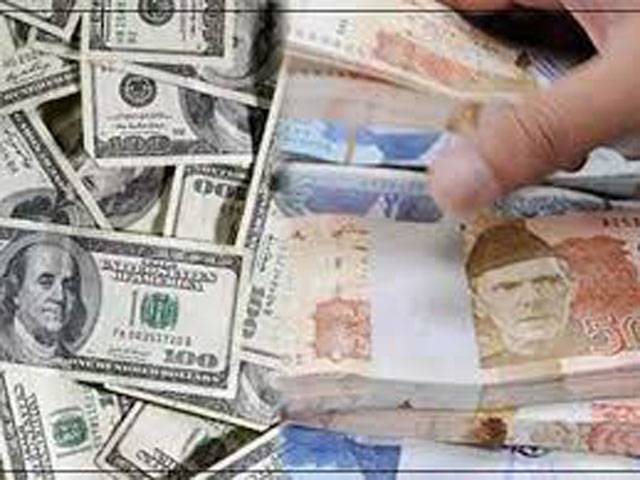LAHORE-The Federation of Pakistan Chambers of Commerce Industry (FPCCI) and Industry has urged the government to control volatility of rupee against the US dollar, as the industrial revival and economic growth is not possible without stability of local currency.
FPCCI president said that Pakistani rupee continued its downward slide against the US dollar, moving in record low range of Rs167-168, having no sign of recovery, despite the fact that Pakistan’s Current Account Deficit (CAD) has reduced by 78 per cent owing to lower imports and better inflows.
He said that the CAD fell to $2.97 billion during fiscal year 2019-20 while the import bill fell by 19 per cent to $44.57 billion during this period but rupee continued to sink.
He said that sharp depreciation of rupee shows that Pakistan is again moving towards a trade deficit regime, which might jack up the current account deficit yet again.
He said that the inflows of workers’ remittances also grew by 6.4 per cent to $23.12 billion during fiscal year 2019-20 which should have a positive impact on dollar-rupee exchange value.
Mian Anjum Nisar said that huge depreciation of Rupee continued to damage the economy, as the cost of deals done by the businessmen with their foreign counterparts has increased manifold due to massive fall of rupee against dollar.
Apart from increasing exports and controlling imports the government will have to take administrative measures, as a large demand of cash dollars are seen in the market, he suggested. He said that the rupee has dropped by 2.8 per cent or Rs4.55 against the dollar since the start of June.
Mian Anjum Nisar appreciated the positive development, related to the imports, which have now started decreasing since the last financial year followed by the government’s initiative of imposing regulatory duties.
He said that the current account deficit shrank to 1.1 per cent of gross domestic product (GDP) in FY20 and the deficit of $2.96 billion is the lowest in five years which should be appreciated but it is also the fact that the much-needed improvement in the current account deficit was initially achieved by compromising economic growth.
Later, the COVID-19 outbreak slowed down the economy further and caused negative growth for the first time in 68 years.
Terming rupee depreciation against dollar a mysterious development, he said that continued fall of rupee is not understandable with a fact that there was no fundamental change in country’s imports during last few months while other economic indicators are also same for a long time.
In dollar value, the gross domestic product (GDP) contracted 5.22 per cent to $263.80 billion in FY20. The GDP value in terms of dollar does not reflect the growth pattern, as Pakistan measures economic indicators in rupee value and converts it into dollar term.
So, the volatility in the rupee-dollar exchange value would lead to a huge difference between GDP growth in dollar value and real growth in rupee term.
Quoting the central bank data, he said the foreign direct investment rose 88 per cent to $2.56 billion in the country in FY20, as in June alone, the foreign investment surged 70.53 per cent to $174.8 million, which could help strengthen the rupee and the foreign exchange reserves.
Moreover, Pakistan has received around $500 million in soft loan from the World Bank last month, helping the rupee to maintain its uptrend, besides bridging the shortfall in budgeted expenditures.
Earlier, Pakistan has also received $1.3 billion in commercial loan from a Chinese bank and another $1.5 billion from the Asian Development Bank, World Bank and AIIB in June.
The International Monetary Fund also provided an emergency loan of $1.4 billion in April to fight coronavirus. Mian Anjum Nisar was of the view that State Bank of Pakistan will have to remain vigilant in this regard.
Besides this, the SBP and the government also need to intervene and come up with policy reforms to control depreciation of rupee which is becoming more and more valueless.
FPCCI President said that the objective of the loans should be improving fiscal management as well as the regulatory framework in order to foster economic growth and local industry competitiveness in global market which is not possible without stability of domestic currency.
Friday, April 19, 2024
Businessmen for controlling rupee volatility versus dollar

No damage to Iranian nuclear sites after Israeli airstrikes, says UN nuclear watchdog
12:50 PM | April 19, 2024
Ch Shafay visits Directorate of Consumer Protection Council
April 19, 2024
ECP reviews arrangements for by-elections in Punjab
April 19, 2024
Punjab’s price control initiative: A welcome step
12:33 PM | April 19, 2024
A Tense Neighbourhood
April 19, 2024
Dubai Underwater
April 19, 2024
X Debate Continues
April 19, 2024
Hepatitis Challenge
April 18, 2024
IMF Predictions
April 18, 2024
Kite tragedy
April 19, 2024
Discipline dilemma
April 19, 2024
Urgent plea
April 19, 2024
Justice denied
April 18, 2024
AI dilemmas unveiled
April 18, 2024
ePaper - Nawaiwaqt
Advertisement
Nawaiwaqt Group | Copyright © 2024





